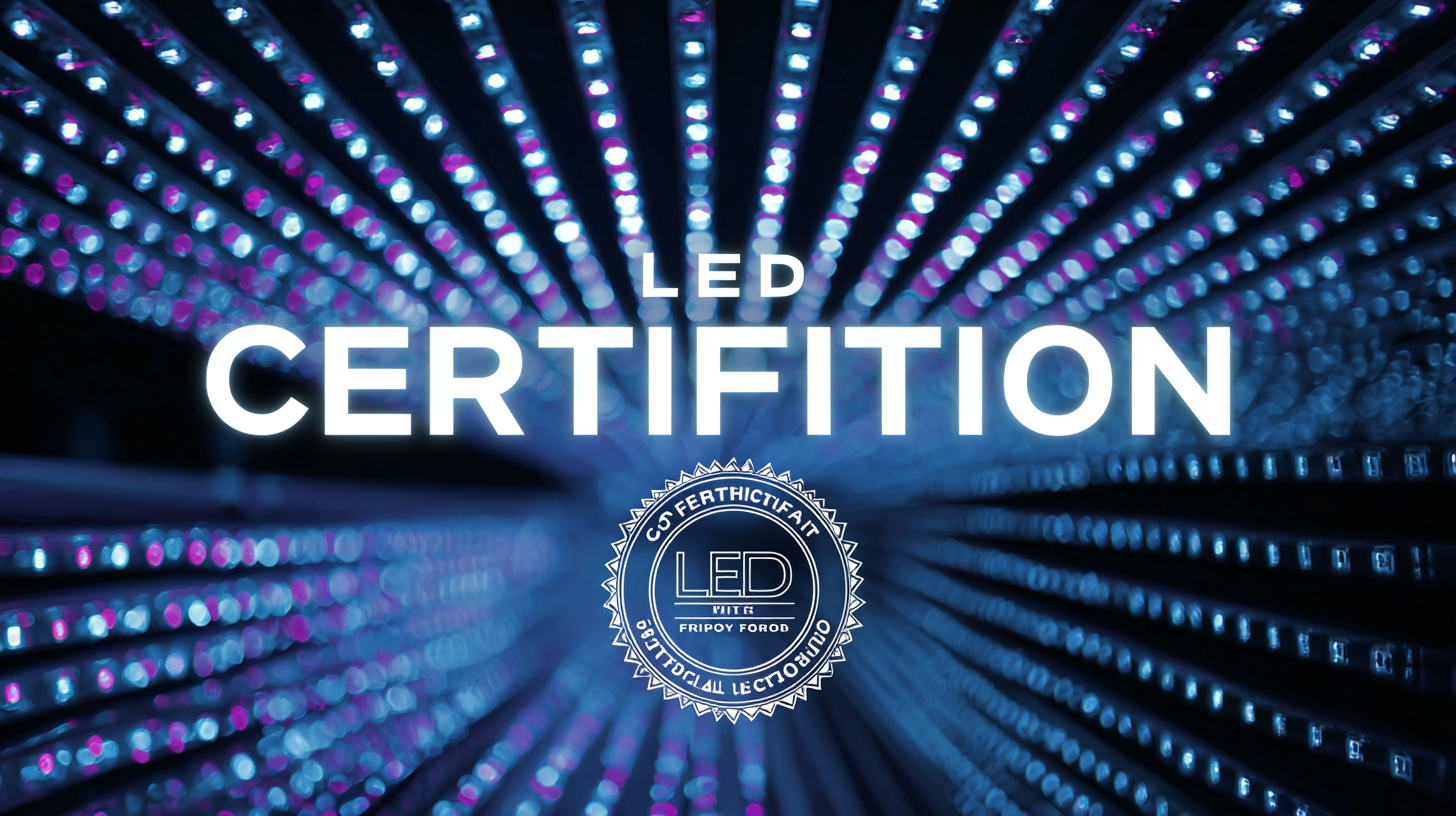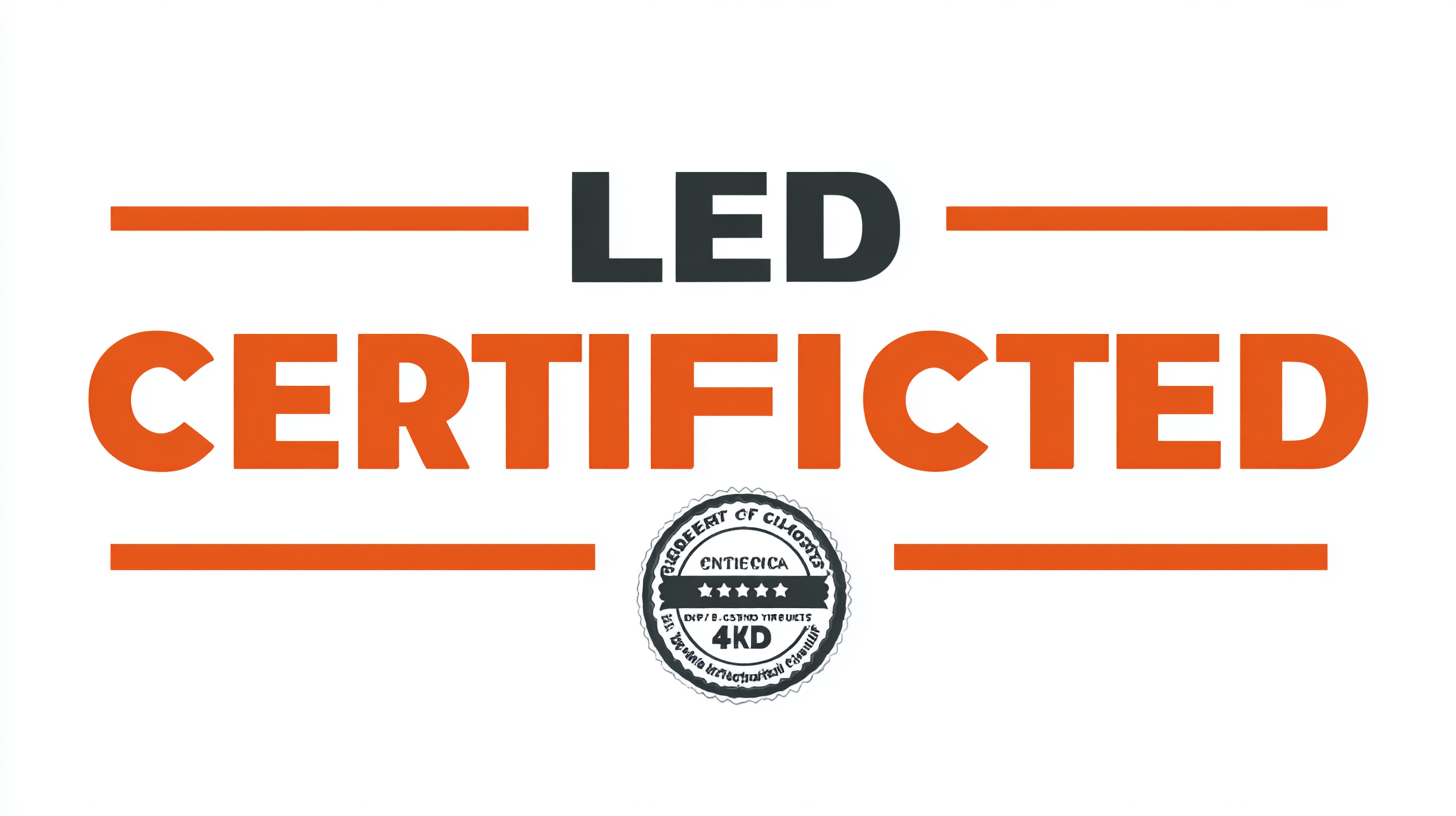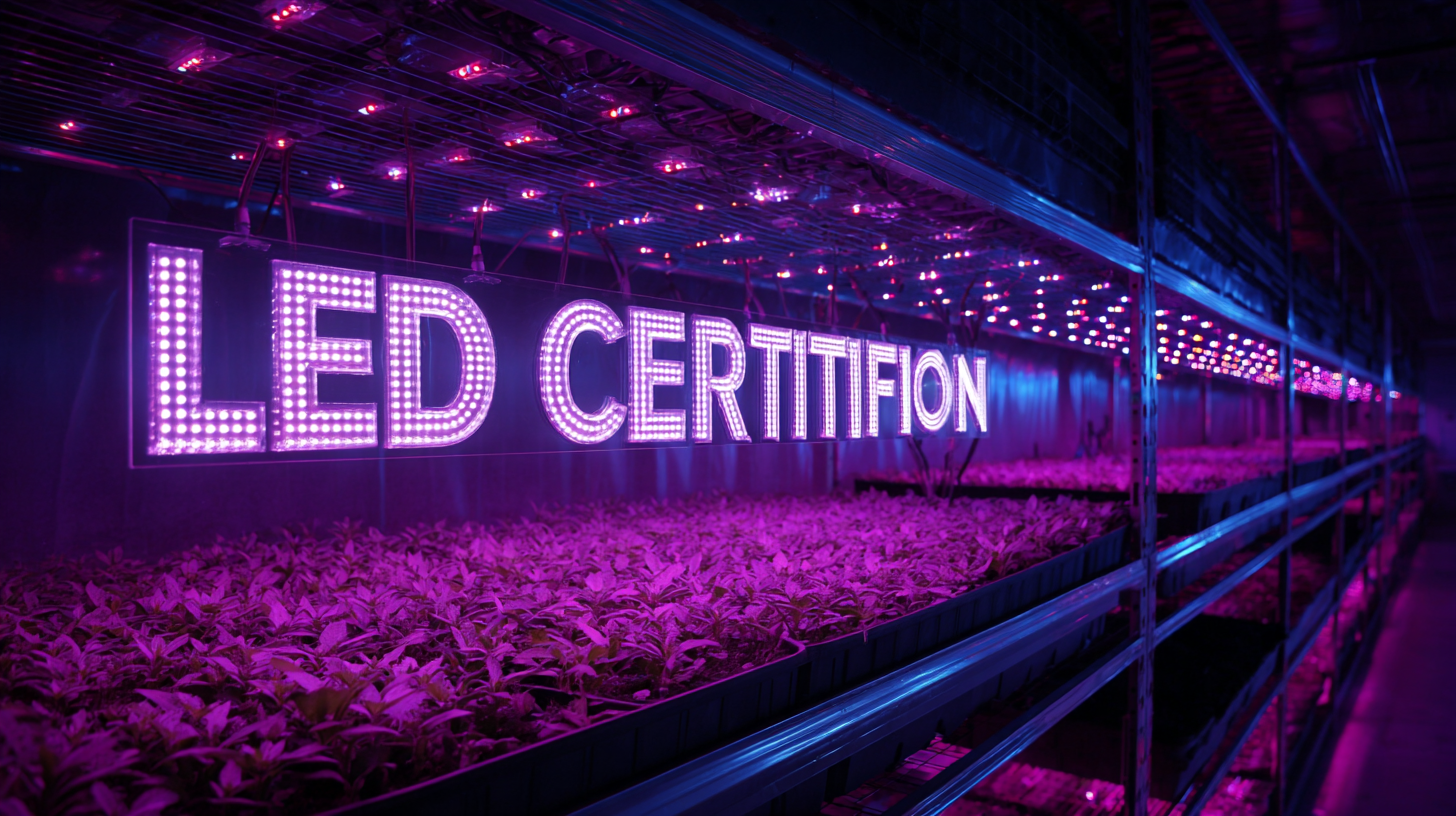
How to Navigate Import and Export Certifications for Best LED Lighting Solutions
In the rapidly evolving world of LED lighting solutions, navigating the intricacies of import and export certifications has become increasingly vital for businesses seeking to maintain a competitive edge. According to a report by the International Energy Agency (IEA), global LED lighting market revenue is projected to reach approximately $136 billion by 2026, driven by a surge in demand for energy-efficient and environmentally friendly lighting options. However, the certification process can be daunting, with a myriad of regulations and standards that vary by region. Understanding these requirements not only ensures compliance but also instills confidence in consumers and partners alike. This blog aims to provide insights into effectively sourcing premium suppliers while navigating the complexities of certification processes, ultimately helping businesses harness the full potential of LED lighting solutions in their growth strategies.

Understanding Import and Export Certifications for LED Lighting Products
Navigating import and export certifications for LED lighting products is crucial for businesses looking to thrive in the global market. As the demand for energy-efficient lighting solutions continues to rise, understanding the relevant certifications is essential for compliance and competitive advantage. In India, the shift towards LED lighting is evident, with the market being significantly influenced by the country's growing electronics manufacturing sector. Recent reports indicate that the Indian LED lighting market is poised for growth, aligning with government incentives aimed at boosting local manufacturing, as seen in initiatives like the Production Linked Incentive (PLI) schemes, which offer substantial benefits to manufacturers.

Moreover, the global LED lighting industry has transitioned away from its previous stronghold in Europe, with new growth patterns emerging in regions like North America and Southeast Asia. For instance, the North American LED lighting market was valued at approximately USD 10.41 billion in 2022, with expectations of an 8.8% CAGR moving forward. To successfully penetrate these markets, manufacturers must diligently adhere to import and export regulations, including the RoHS directive that restricts hazardous substances, ensuring their products not only meet market demand but also comply with safety and environmental standards. By understanding and navigating these certifications, businesses can position themselves effectively in the competitive landscape of LED lighting solutions.
Key Certifications Needed for LED Lighting: A Comprehensive Overview
When considering the best LED lighting solutions, acquiring the appropriate import and export certifications is crucial. These certifications ensure that products meet safety, environmental, and energy efficiency standards. Key certifications include the Energy Star label, which indicates high energy efficiency, and the UL certification, which ensures the product has been tested for safety and performance. Other significant certifications might include CE marking for conformity in Europe and RoHS compliance, which addresses hazardous substances in electrical equipment.
Tips: Always verify if the certifications are applicable in your target market, as requirements can vary by region. Consulting with an import/export specialist can help you navigate through the complex certification landscape. Additionally, maintaining up-to-date knowledge on certification changes in your industry is essential, as regulations can evolve.
Obtaining these certifications not only enhances your product credibility but also encourages consumer trust. Following a structured approach in certification will streamline the process, reducing delays in product launch. Consider investing in training for your team to familiarize them with the necessary procedures for achieving and maintaining these certifications.
Step-by-Step Process for Obtaining Import and Export Certifications
Navigating the complex landscape of import and export certifications for LED lighting solutions can seem daunting. However, understanding the step-by-step process can streamline your efforts and ensure compliance with industry standards. According to a recent report by MarketsandMarkets, the global LED lighting market is projected to reach $110.5 billion by 2027, emphasizing the importance of adhering to certifications that guarantee quality and safety. This growth showcases the necessity for businesses to navigate certification processes to maintain competitiveness.
Start by identifying the specific certifications required for your product in different markets. This generally includes standards set by organizations such as the International Electrotechnical Commission (IEC) and Underwriters Laboratories (UL). Each country may have its own requirements, so comprehensive research is essential.
Tip: Consider consulting with experts in regulatory compliance early in the process. They can provide insights into the intricacies of each certification, potentially saving you time and resources.
Next, gather all necessary documentation, including technical specifications and test results from accredited laboratories. This will not only ease the certification process but also prepare your product for market entry effectively.
Tip: Utilize digital platforms that specialize in certification assistance to track progress and deadlines. This can improve efficiency and ensure you are not missing any crucial requirements along the way.
Common Challenges in LED Lighting Certification and How to Overcome Them
Navigating the certification process for LED lighting products can be a daunting task due to common challenges such as understanding regulatory requirements and meeting energy efficiency standards. According to a report by the International Energy Agency (IEA), approximately 30% of global electricity consumption is attributed to lighting, making compliance with standards like the ENERGY STAR program essential for manufacturing quality LED products. Manufacturers often face hurdles in achieving certification due to varying requirements across different markets, which can lead to increased costs and prolonged time-to-market.
To overcome these challenges, companies should invest in developing a comprehensive understanding of the certification landscape. Collaborating with certification bodies early in the design process can streamline approvals and ensure products meet all necessary criteria.
**Tip:** Conduct a gap analysis of current product designs against the certification requirements to identify areas needing improvement.
Another crucial aspect to consider is the documentation required for certification. Incomplete or inaccurate paperwork can result in delays or rejections. The LED lighting industry is evolving rapidly, and keeping abreast of updates in standards can improve compliance rates.
**Tip:** Regularly review the latest industry reports and guidelines, and establish a dedicated team to oversee compliance efforts and technical documentation.
LED Lighting Certification Challenges and Solutions
This chart illustrates common challenges faced in LED lighting certifications and their relative severity. Each bar represents the perceived difficulty in navigating specific compliance areas, showing that regulatory compliance is the most significant challenge faced by manufacturers.
Tips for Staying Updated on Regulatory Changes in LED Lighting Compliance
In the rapidly evolving landscape of LED lighting, staying informed about regulatory changes is crucial for manufacturers and consumers alike. The LED market is projected to reach $80 billion by 2026, according to a report by MarketsandMarkets, and compliance with international standards has become a key factor in maintaining competitiveness. As regulations can shift frequently, having a proactive approach to compliance is essential for navigating the complexities of import and export certifications.

To keep up with the latest in regulatory changes, professionals should regularly consult official sources such as the U.S. Department of Energy (DOE) and the International Electrotechnical Commission (IEC). Another reliable strategy is subscribing to industry newsletters and joining relevant associations, which often provide critical insights and updates on compliance requirements. Attending industry conferences can also provide valuable networking opportunities and the chance to hear firsthand from experts about upcoming regulatory shifts.
Ultimately, businesses should implement a compliance management system that allows for efficient tracking of regulations affecting LED lighting. Regular training sessions for staff on new compliance protocols can drive awareness and help mitigate risks associated with non-compliance. Investing in up-to-date compliance technology tools can also streamline processes, ensuring that all certifications are in place when entering new markets.